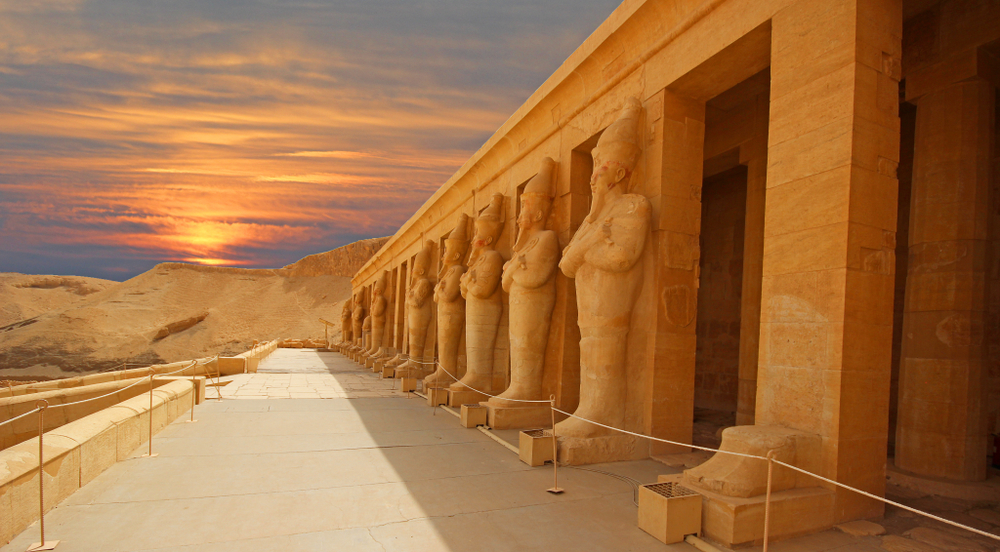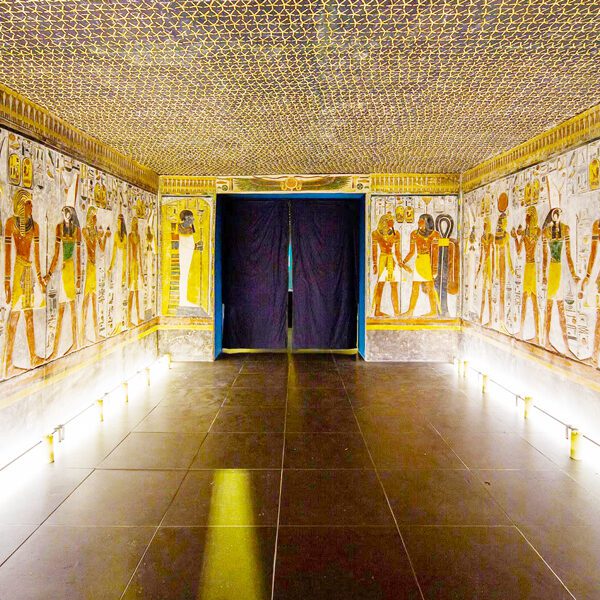
10 Incredible Facts About the Valley of Kings You Must Know
The Valley of the Kings stands as one of the most awe-inspiring archaeological treasures of ancient Egypt. Located on the west bank of the Nile River near Luxor, this site served as the burial ground for many of Egypt’s most powerful rulers during the New Kingdom period (1550–1070 BC). Known for its elaborately decorated tombs, many filled with precious artifacts meant to guide the pharaohs into the afterlife, the Valley continues to captivate historians and travelers alike.
1. Over 60 Tombs Have Been Discovered

Valley of the Kings Facts – Valley of The Kings Tombs – Valley of the Kings Luxor
One of the most fascinating facts about the Valley of Kings is the sheer number of tombs found within the site. So far, over 60 tombs have been discovered, and many more may still lie hidden beneath the surface. These tombs belonged not only to the pharaohs but also to their families and high-ranking officials. Each tomb is unique in its design and decoration, ranging from simple chambers to elaborate, multi-roomed structures filled with artwork.
The Valley of the Kings contains tombs from pharaohs of the 18th, 19th, and 20th dynasties, including famous rulers like Tutankhamun, Ramses II, and Seti I. With each new discovery, archaeologists learn more about ancient Egyptian burial practices and beliefs in the afterlife.
2. The Tomb of Tutankhamun
Perhaps one of the most famous facts about the Valley of Kings is that it is the site of the discovery of King Tutankhamun’s tomb. Found in 1922 by British archaeologist Howard Carter, Tutankhamun’s tomb is notable for being nearly intact, unlike many other tombs in the valley that had been looted over the centuries. The tomb contained thousands of artifacts, including the iconic golden mask of the young pharaoh, which is now one of the most recognized symbols of ancient Egypt.
This discovery is considered one of the greatest archaeological finds of all time and has played a key role in popularizing ancient Egyptian history around the world.
3. The Valley Was Specifically Chosen to Avoid Tomb Robbing
A surprising fact about the Valley of Kings is that it was specifically chosen as a burial site in an attempt to avoid tomb robbing. Before the New Kingdom, Egyptian pharaohs were buried in massive pyramids, but these structures became prime targets for thieves. In contrast, the Valley of the Kings, with its remote and rugged terrain, was easier to conceal. The tombs were carved directly into the rock and carefully hidden from view.
Despite these precautions, many of the tombs were still robbed in antiquity. However, the hidden location did help preserve some tombs, especially those that remained undiscovered for thousands of years, like Tutankhamun’s.
4. The Walls Are Covered in Religious Texts
Another captivating fact about the Valley of Kings is the rich array of religious texts that adorn the walls of the tombs. These texts, such as the Book of the Dead and the Amduat, were inscribed and illustrated to guide the deceased pharaohs through the underworld and into the afterlife. The tombs feature intricate scenes showing the pharaohs interacting with gods like Osiris, the god of the dead, and Ra, the sun god.
These colorful hieroglyphs and scenes were not merely decorative but served an important religious function. The texts were meant to ensure the pharaohs’ safe passage through the various challenges of the afterlife and their eventual resurrection.
5. The Tombs Were Carved Directly Into the Cliffs
One of the unique facts about the Valley of Kings is that the tombs were not constructed above ground, but rather carved directly into the limestone cliffs. This method of burial was much different from the earlier pyramids used during Egypt’s Old Kingdom. The tombs often extended deep into the mountainside, with long corridors and multiple chambers.
The deeper the tomb, the more elaborate it often was, with pharaohs commissioning tombs that would take decades to complete. Unfortunately, the rush to complete some tombs before the death of a ruler sometimes meant that not all were finished, resulting in incomplete decoration.
6. The Curse of the Pharaohs
One of the most widely known facts about the Valley of Kings is the tale of the Curse of the Pharaohs. After the discovery of Tutankhamun’s tomb, several members of the excavation team died under strange circumstances, leading many to believe that a curse had been placed on those who disturbed the tomb.
The most famous victim of the so-called curse was Lord Carnarvon, who financed the expedition and died shortly after the tomb was opened. While modern science attributes these deaths to various natural causes, the legend of the curse still persists and adds to the allure and mystique of the Valley of the Kings.
7. Seti I’s Tomb is Among the Most Beautiful
Another fascinating fact about the Valley of Kings is the beauty of Seti I’s tomb. Often considered one of the most elaborately decorated tombs in the valley, the tomb of Seti I is renowned for its vivid paintings and intricate carvings. The tomb is vast, with multiple rooms and corridors filled with colorful depictions of the pharaoh’s journey into the afterlife.
The tomb was so artistically significant that when it was discovered, it set a new standard for what archaeologists expected from royal burials in the valley.
8.The Ramses II’s Legacy Lives On in the Valley
Ramses II, also known as Ramses the Great, is one of Egypt’s most famous pharaohs, and his tomb in the Valley of the Kings is a testament to his importance. Ramses II ruled for over 60 years and oversaw a period of great prosperity and monumental building projects. His tomb, however, like many others, was looted in antiquity.
Despite this, Ramses II’s legacy lives on in the Valley of the Kings, where his tomb remains a popular site for visitors, showcasing his enduring influence on Egypt’s history.
9. Tomb KV5: The Largest Tomb Ever Discovered
One of the lesser-known facts about the Valley of Kings is that KV5 is the largest tomb ever discovered in the area. This tomb belonged to the sons of Ramses II and contains over 120 chambers. While it was initially discovered in the early 19th century, its true extent was not fully realized until the 1990s. The tomb is massive and offers archaeologists incredible insights into the burial practices of the royal family.
10. The Valley is Still an Active Archaeological Site
Perhaps one of the most exciting facts about the Valley of Kings is that it remains an active archaeological site. New discoveries are made every year as archaeologists continue to excavate and explore the valley. Advances in technology, such as ground-penetrating radar, have made it possible to locate previously unknown tombs and chambers hidden beneath the surface.
As ongoing work continues, who knows what additional treasures and secrets the Valley of the Kings will reveal?
Conclusion
The facts about the Valley of Kings reveal the fascinating complexity of ancient Egyptian burial practices, as well as the incredible efforts made to preserve these rulers for eternity. From the hidden tombs to the incredible artwork and ongoing discoveries, the Valley of the Kings remains one of the most captivating archaeological sites in the world, offering a glimpse into the rich history and culture of ancient Egypt. Whether you’re a history buff or just intrigued by the mysteries of the past, the Valley of the Kings is a place that continues to inspire awe and curiosity.
Recent Posts
Edfu Temple :5 Reasons to Explore the Majestic Today
Discover 7 Amazing Features of Sinbad Hotel Egypt for 2024
Top 7 Reasons to choose Egypt Air Hospital in Egypt
All Categories
Tags

Thailand





